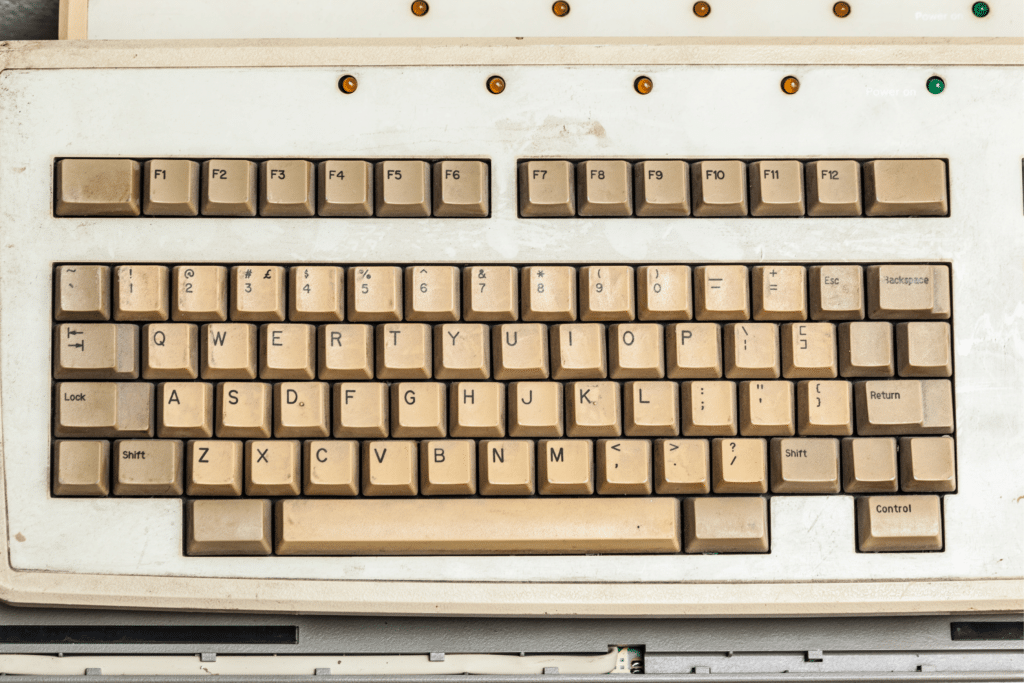Is there still a place for legacy tech in your business?
Related Articles
Legacy tech has paved the way for our future and is still central to many crucial business services today. This technology’s value and reliability has stood the test of time for many; however, for some, its functionality and lack of flexibility can prevent organisations from progressing. Leading us to the question dividing many tech experts… is there still a place for legacy tech in your business?
To help you answer this tricky and complex question, we’ve compiled a list of crucial factors for your organisation to consider when determining whether to maintain or modernise your tech.
Business requirements
A system should not be discarded simply because of its age. When considering whether to modernise your tech, what’s more important, is weighing up if your current technology is suitable for your business’s needs and current ways of working. Without this analysis, you risk not receiving the ROI you desire from a new system.
Consider the impact on your business’s continuity. If the current tech is meeting its requirements, and keeps workflow smooth, moving to new tech could result in disruption to everyday work and therefore, cause short-term losses in productivity. It is also likely supporting processes for your tech are already in place, which could cause further disruption when changing.
On the other hand, it is important to evaluate the efficacy of your legacy technology as well as that of your competitors. With some fallbacks including; limited reporting functions, data integration issues and no option of remote connection, it’s important to ensure your tech is not affecting the agility and objectives of your organisation.
Impact on stakeholders
When thinking about any technology change, all stakeholders must be considered. Do not underestimate the unintended consequences of change within a system which has evolved over many decades (IET, 2021).
In 2015, BT Openreach announced its decision to withdraw the legacy public switched telephone network (PSTN) as part of a long-term shift from analogue to digital. A 2021 report by the IET, ‘Interdependencies and resilience in digital transformation’, raises how a change in one infrastructure can have unexpected hidden impacts on another. Using the withdrawal of PSTN and its impact on the energy sector as an example.
A prime example of the need to thoroughly analyse the impact on your stakeholders prior to making any technological transition.
Cost and time
A more obvious but crucial aspect to consider is the cost and time to your business. Investing in a new technology itself is usually a significant investment, but it is also key to factor in the cost and time of managing the change within your organisation. You will need to ensure people buy into the idea of the new tech and most importantly, can use it with ease. Consider how you will build new processes, training materials/ plans, and if you need any new staff members to manage the technology.
Many legacy tools have been used for decades and will contain years’ worth of crucial data making transferring the data to a new system complex. Factor in the potential of having to hire an expert to make the transfer of your data.
Your current legacy tech may also be cost-efficient in managing your business’s requirements. Conducting a comprehensive assessment of the value your tech can provide, will help determine the ideal plan to maximise the ROI on newer technology and existing legacy systems.
To do this, begin by updating your asset inventory, classifying systems based on their commercial value, and then imagining the prospects that will provide the best benefits for the company, its shareholders, and its consumers.
Reliability
In many cases, legacy tech is very reliable. If the tech is old, it is because it has worked for many years and has stood the test of time.
According to ModLogix, the computer hardware aboard NASA’s Orion is powered by two IBM PowerPC 750X sing-core processors. These outdated chips have been in use since 2002. This is because IBM computers are reliable – the most important necessity in space.
Identify the most important requirement for your tech to meet your business’s objectives. If it is reliability that matters most, think carefully about making a technological transition.
Maintaining your legacy tech
Finally, to increase the longevity of your legacy tech, create a comprehensive plan to maintain it. Updating a legacy system often requires the expertise of a skilled technician so planning how you will manage this is key.
Outsourcing legacy tech support services is often the most cost-effective way to maintain and update your tech. Using this method can give you options such as integrating your legacy system with current solutions by mapping the database of the existing tool to a modern API. Or, using new cloud services and process automation to keep the benefits of your legacy system while harnessing the potential of today’s modern technologies.
Overall, when deciding whether to modernise or maintain your legacy tech, consider your business’s requirements, stakeholders, budget and the most important requirement of the tech for your business; doing the research and developing a strategy will help you make the right choice for your company.
At Linnk, we believe that there is still is and will always be a space for legacy tech in businesses. It has stood the test of time, value and is still central to many crucial services today.
Looking for legacy tech support?
At Linnk Support, we are industry leaders in providing OTS and RTS technical support services globally across telecoms and IT. Supporting global telecommunications vendors, operators and existing OEM networks for over 10 years.
Connect with us to find out how we can support your organisation or find you your perfect role in tech.


